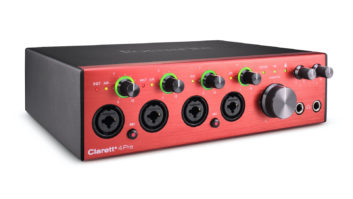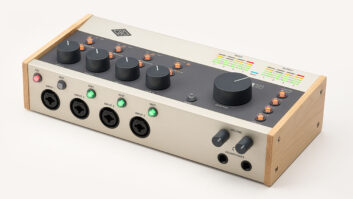
Every mobile session needs a central brain to run the show. On a recent recording trip, it was the Universal Audio Apollo x4—and that was for good reason. We won’t go into every detail of what is included; instead, I’ll talk about how we used it. Connecting to my MacBook Pro via a single Thunderbolt 3 cable, Apollo x4 includes four Unison mic preamps and two Unison Hi-Z instrument inputs. While you can have up to eight channels of additional digital input via optical ADAT/SPDIF input, we kept it simple and just used the four channels and Hi-Z inputs.
PhantomFocus System Studio Monitors Review
We connected one of the two independent headphone outputs to an external headphone amp; we used the second one for the pair of cans worn by whoever was running the laptop. It was very useful to have the Monitor button on the front, enabling access to each of the HP1 and HP2 outputs, so we could quickly change levels with the large rotary knob. By clicking a third time, “Monitor” lights up on the front panel and the rotary knob then controls the two TRS L R monitor outputs on the back, which were connected to our main monitors.
There are a few functions on the X4 that became useful during the sessions. The Preamp button on the front allows easy access to switch between CH1, CH2 and CH3/4, from which you could choose Mic or Line. There’s also a button for 48V phantom and a talkback button, which we didn’t need as we were very close to each other. We did use the dim button during playback to communicate ideas to each other (at a lower volume!).
Where the X4 really shined was during guitar and bass tracking, when we used the Unison features to dial up any number of amps, from the Marshall Plexi Classic to the Ampeg SVT VR (which are both included). Having near-zero latency is critical to me as a player, and the ability to get the feel and sponginess of the amps because they are Unison-enabled made a big difference in the quality of the parts. We also were glad to have quad-core processing because we ran a lot of plug-ins, such as the Lexicon 480L, AMS RMX16, 610B Tube Preamp and the Avalon VT737, which we used on a lot of tracks.
The Apollo X4 was undeniably a critical piece in the production chain, and the ability to have too much power and flexibility in a product with such a small footprint made it one of the stars of the show.
Universal Audio • www.uaudio.com







